
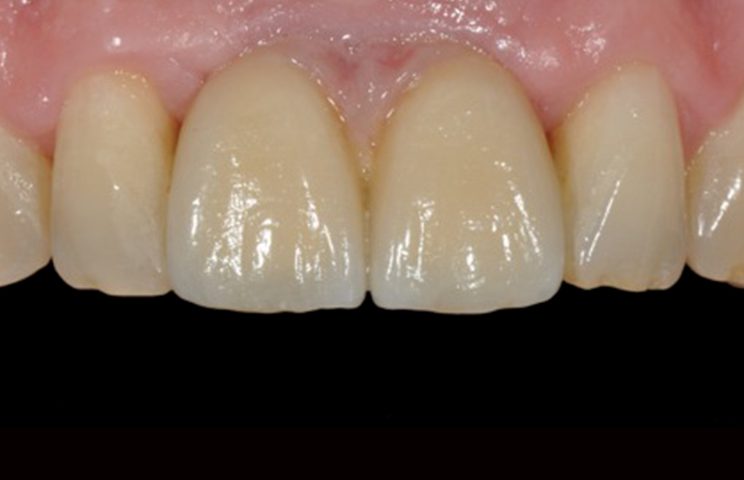
Artificial pink gum can provide a simple treatment in this kind of case, eliminating the need for complex invasive guided regeneration surgery.
Dental restorations in the anterior esthetic region are one of the greatest challenges in dentistry today.
It is not always possible to achieve a good emergence profile during a restoration by using solely custom temporary abutments to work on the tissue. In some instances, before reaching this stage, the patient has had to undergo complex bone and tissue regeneration surgical operations that do not always guarantee a good esthetic outcome.
This type of guided regeneration treatment and peri-implant plastic surgery are sometimes inadequate techniques for achieving the satisfaction and wellbeing of some of our patients. In these cases, less invasive prosthetic treatments can be used, among them artificial gum.
Consequently, multidisciplinary treatments, together with an accurate diagnosis and planning, are increasingly making it possible to achieve greater overall success.
CLINICAL CASE
The patient, aged 36 and in good health, came to the clinic as he was looking to improve the esthetic of his anterior region.
Due to a childhood injury, teeth 11 and 21 were extracted. Two crowns were fitted and a few years later an apicectomy was carried out. Finally both teeth were extracted.
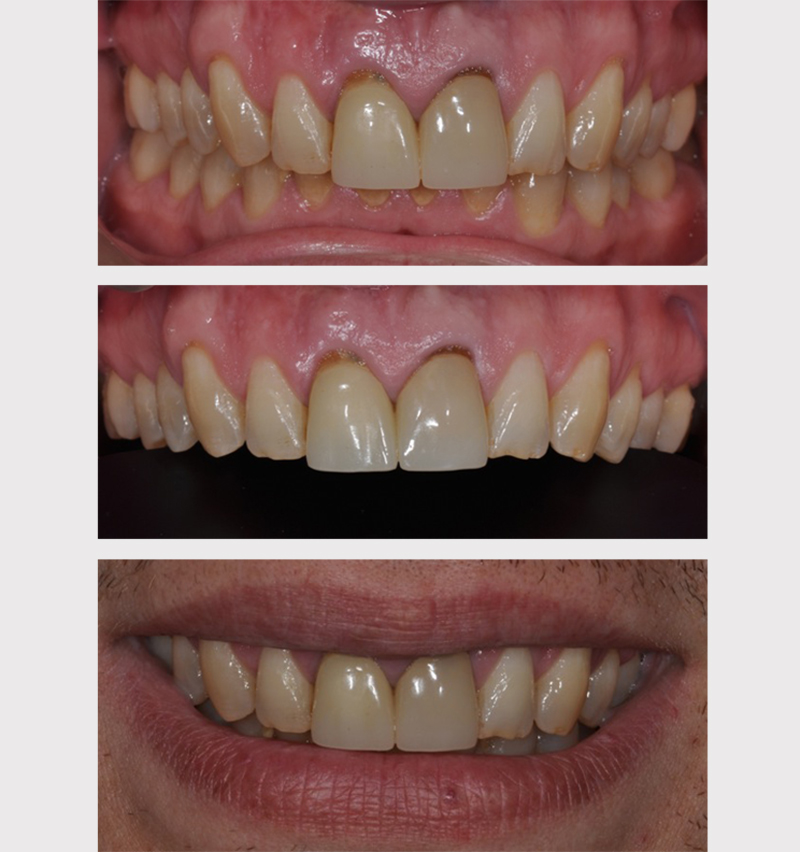
Following the clinical examination and with the patient’s consent, the decision was made to extract the two central teeth and to leave the tissue to heal before carrying out guided surgery to place two implants and a subsequent permanent screwed restoration. Even though the x-rays showed there was a lack of vertical bone tissue, which could compromise the result of the final prosthetic restoration, the patient elected not to undergo guided regeneration surgery to reestablish the alveolar and esthetic line.
A few days after the extractions, a digital impression of the now healed tissue was taken (.stl file). This and a DICOM file, obtained from a CAT scan, were employed to plan the position of the implants in relation to the final prosthetic restoration using the Implant Studio (3Shape) software.
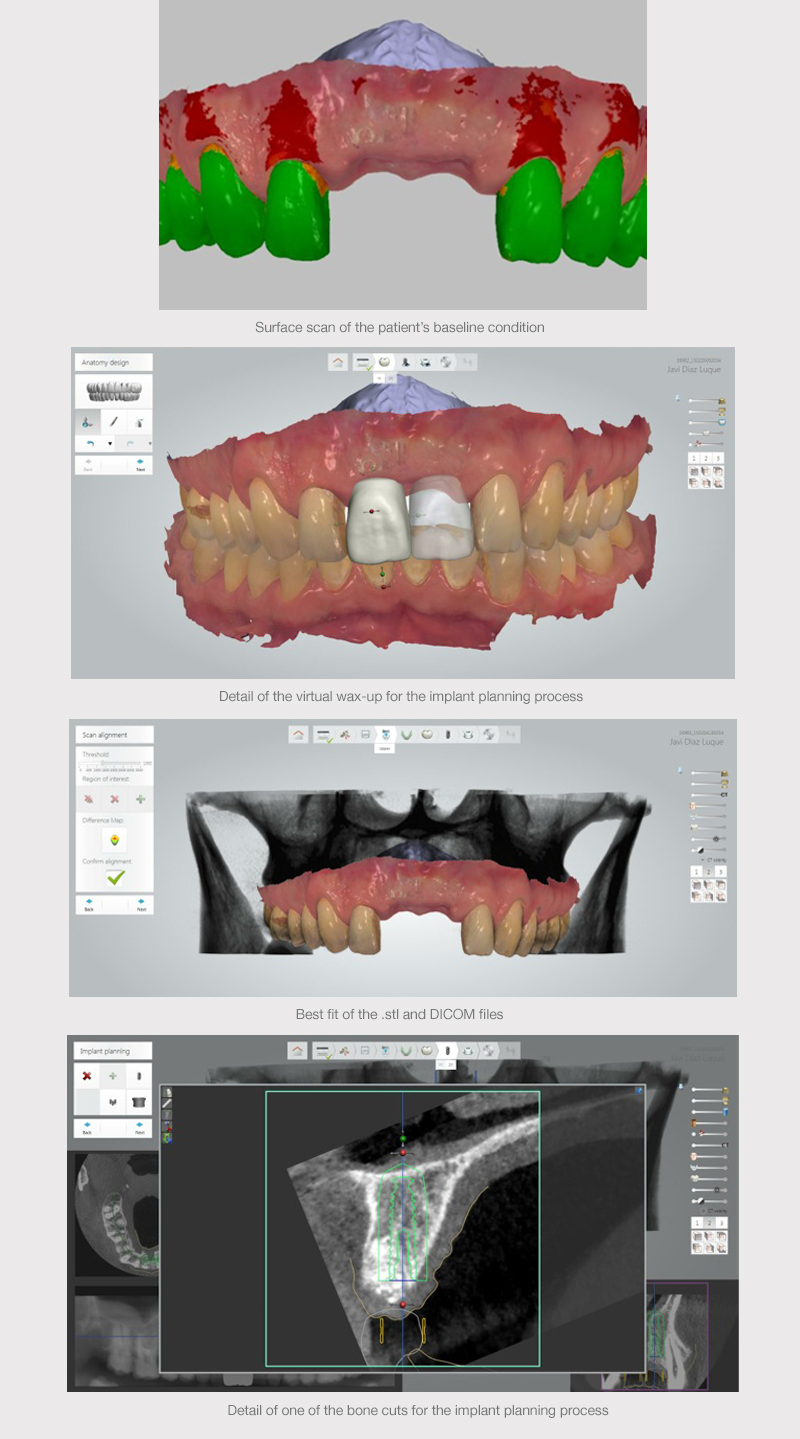
The virtual wax-up made it possible to establish the patient’s real condition, providing all the clinical information required to determine the final type of treatment to be done as regards both the surgical and the prosthetic aspects.
The lack of vertical bone in the anterior region, which could compromise the esthetics of the final result, was noted. Consequently, two implants were planned in the most appropriate position in order to achieve the functionality and esthetics of the final restoration. The use of pink ceramic was deemed necessary to maintain the ideal proportion of the teeth and a pleasing and balanced restoration profile.
Once the implant planning process was complete, the surgical guide was designed. This guide would make it possible to place the implants in a guided manner into the chosen position to obtain the desired prosthetic result.

The tooth-supported surgical guide designed using the software was sent for printing at the AVINENT CAD CAM milling center, together with the 3D working model of the patient’s mouth.
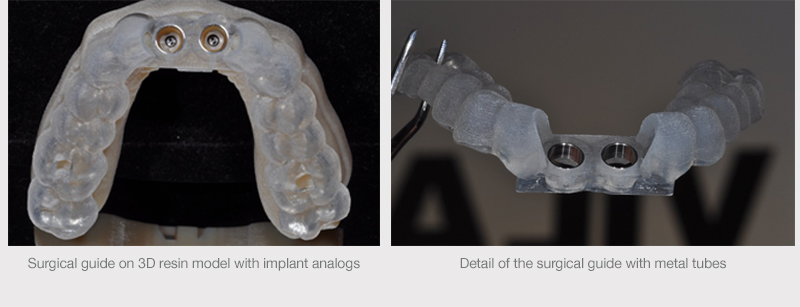
Eight weeks after the extractions, two Avinent Implant System Biomimetic Ocean IC (3.5 x 15 mm) guided implants were placed in positions 11 and 12 in a minimally invasive manner without opening a flap.
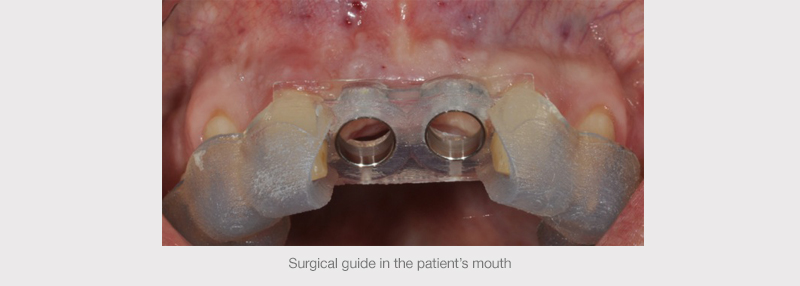
Good primary stability was achieved during the placement, and as a result the decision was made to screw two custom PEEK healing abutments to the implants during the same surgical operation. These abutments were designed by the Corus Garbident lab and milled at the Core3dcentres center prior to the surgery thanks to the digital case planning and Dental System (3Shape) design software.
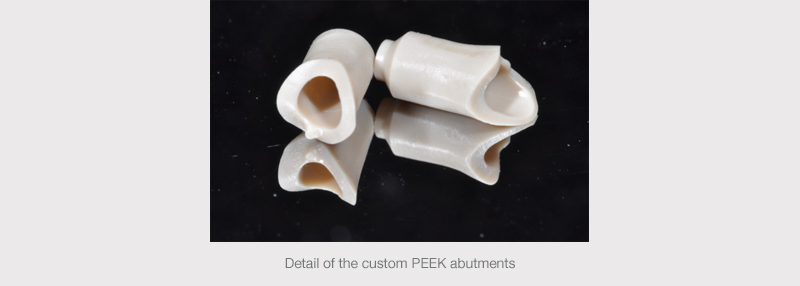
During the period of the implants’ osseointegration, the patient was given a removable temporary prosthesis supported by the abutments, which helped to gradually shape the tissue.
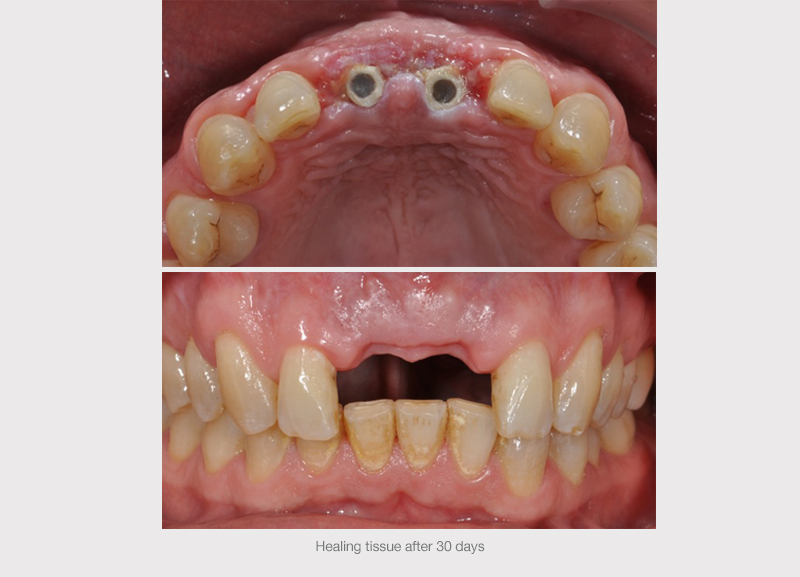
Later, temporary crowns made of Telio were screwed to the implants to shape the emergence profiles and to attempt to improve the interincisal papilla over a period of three months.
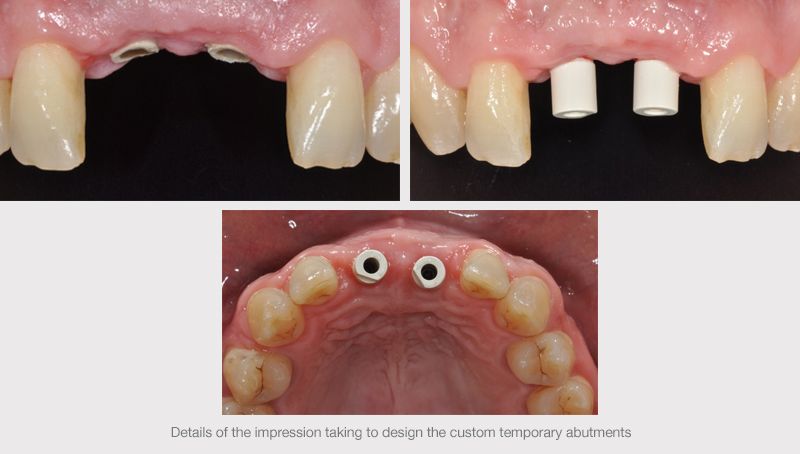

Lastly, at the end of the three months, the final intraoral impressions were taken to make it possible to design two splinted metal ceramic crowns screwed directly to the implant with artificial pink gum to compensate for the esthetic defect.
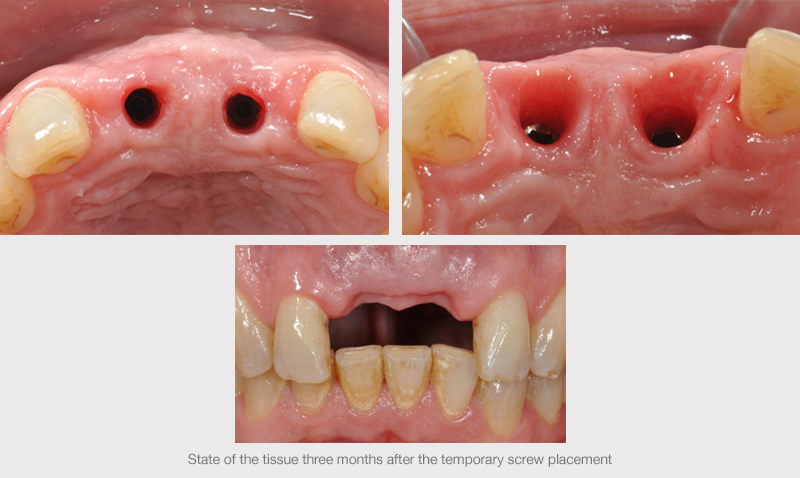

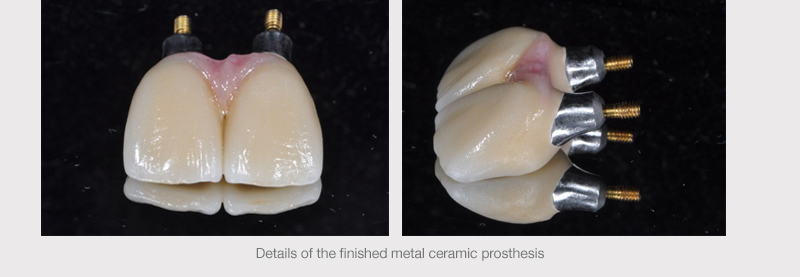
CONCLUSION
– Dental restorations in the anterior region with a high esthetic requirement are one of the greatest challenges in dentistry.
– Conventional treatments in cases where there is a lack of tissue in the anterior region can result in unesthetic restorations.
– Artificial pink gum can provide a simple treatment in this kind of case, eliminating the need for complex invasive guided regeneration surgery. With adequate planning through diagnostic imaging and a diagnostic wax-up, it is possible to establish a treatment plan suited to the needs of the case and to satisfy the patient.
– Good lab work, plus tissue healing thanks to the use of the appropriate abutments, is essential in order integrate the ceramic gum into the mouth as a whole.
